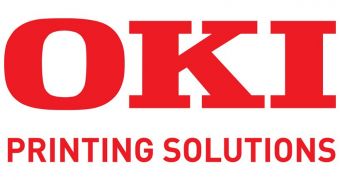OKI Data Corporation subsidiary OKI Digital Imaging used the company's Epi Film Bonding Technology to create a 1.1-inch Quarter Video Graphics Array (QVGA) LED display, which, by implementing the world's first 65-micrometer pitch between LED chips, delivers high-definition images while reducing the power consumption to a mere tenth of what LCDs normally use.
The Epi Film Bonding Technology was initially developed for printheads and allows thin films to be released and bonded to dissimilar materials. LED printheads based on this technology allow for higher density semiconductors and multi-layers, making possible the aforementioned reduction in power usage. In tune with its belief that the Epi Film will give birth to possibilities for innovation in the area of compound circuit ICs, the OKI Group was the first to achieve high-volume production of such LED printheads.
“The new technology has made it possible for us to develop a groundbreaking LED display that provides high definition images while maintaining compact dimensions,” Hiroshi Kikuchi, president of OKI Digital Imaging, said. “The development of the world’s first thin-film-bonding technology in 2006 marked a significant milestone for the OKI Group. As shown by today’s announcement, that technology laid the foundations for continuing developments in LEDs. The OKI Group plans to leverage the expertise and technical knowledge accumulated over 20 years of experience with LED printing to develop new technologies in other areas and to expand its LED-related businesses.”
The group used this technology to mount thin LEDs on a metal board in a way that allowed for high reflection and radiation. Clear daylight visibility is enabled by the high contrast (over 5000:1) and the 65-micrometer pitch between the LED chips gives the ability to project high-definition images, even for small screens. The display is self illuminating, has faster response times and is more compact than LCDs in need of a separate light source.
OKI Digital Imaging has recently acquired an LED manufacturing facility in the Gunna prefecture, Japan, which is where the actual manufacturing process of the product will take place. Sample shipments are expected by the end of fiscal year 2010.

 14 DAY TRIAL //
14 DAY TRIAL //